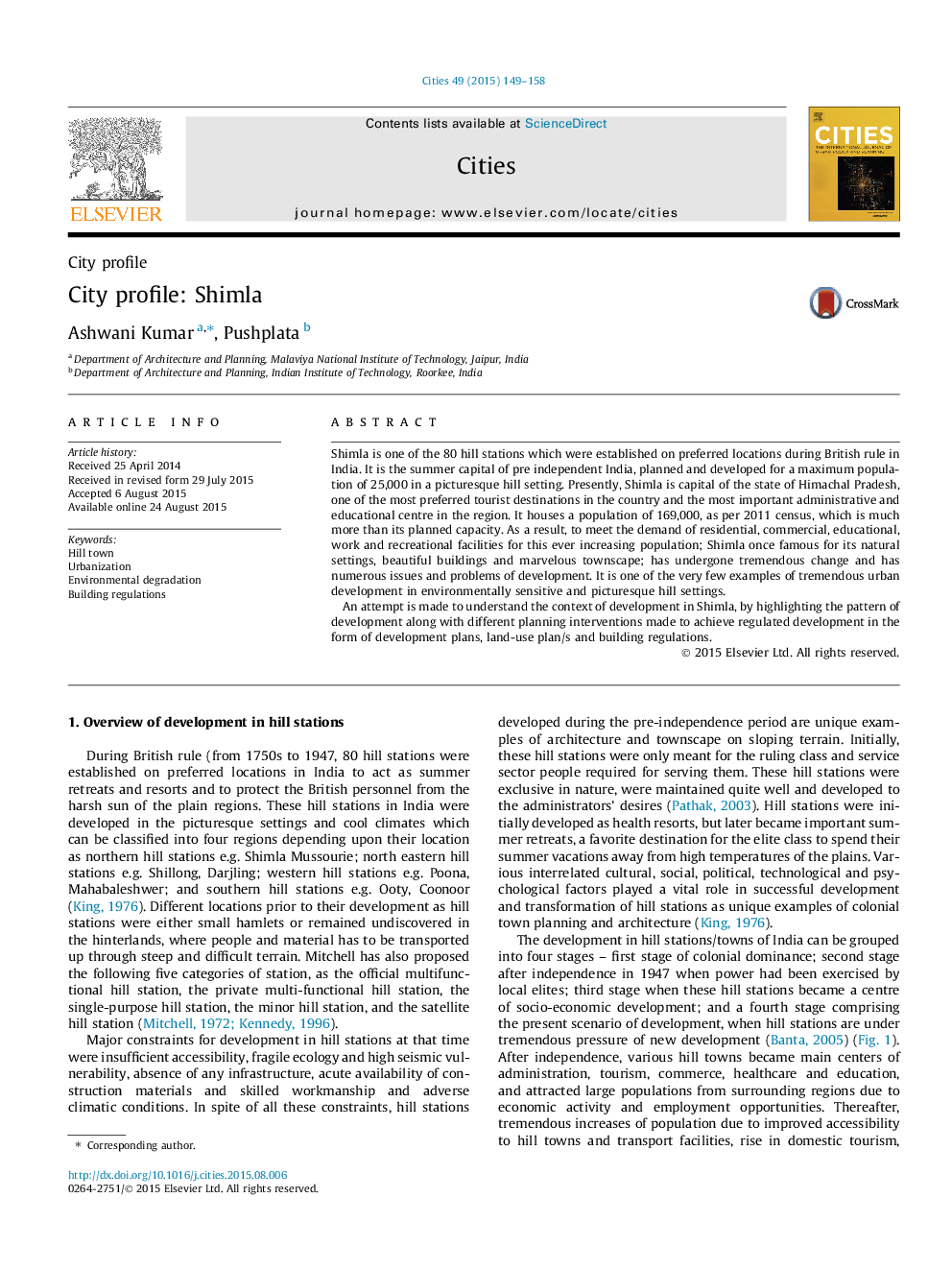| Article ID | Journal | Published Year | Pages | File Type |
|---|---|---|---|---|
| 1008239 | Cities | 2015 | 10 Pages |
•There an attempt is made to understand the context of development in Shimla, by highlighting the historical evolution and pattern of development alongwith different planning interventions in the form of development plans to achieve regulate and systematic development.•Existing issues of development in Shimla town are highlighted alongwith the different issues of existing landuse to have an in-depth understanding of different problem and concerns.•Various issues of existing building regulations of Shimla town are further highlighted with their consequential impacts on the urban environment of hill town.
Shimla is one of the 80 hill stations which were established on preferred locations during British rule in India. It is the summer capital of pre independent India, planned and developed for a maximum population of 25,000 in a picturesque hill setting. Presently, Shimla is capital of the state of Himachal Pradesh, one of the most preferred tourist destinations in the country and the most important administrative and educational centre in the region. It houses a population of 169,000, as per 2011 census, which is much more than its planned capacity. As a result, to meet the demand of residential, commercial, educational, work and recreational facilities for this ever increasing population; Shimla once famous for its natural settings, beautiful buildings and marvelous townscape; has undergone tremendous change and has numerous issues and problems of development. It is one of the very few examples of tremendous urban development in environmentally sensitive and picturesque hill settings.An attempt is made to understand the context of development in Shimla, by highlighting the pattern of development along with different planning interventions made to achieve regulated development in the form of development plans, land-use plan/s and building regulations.
